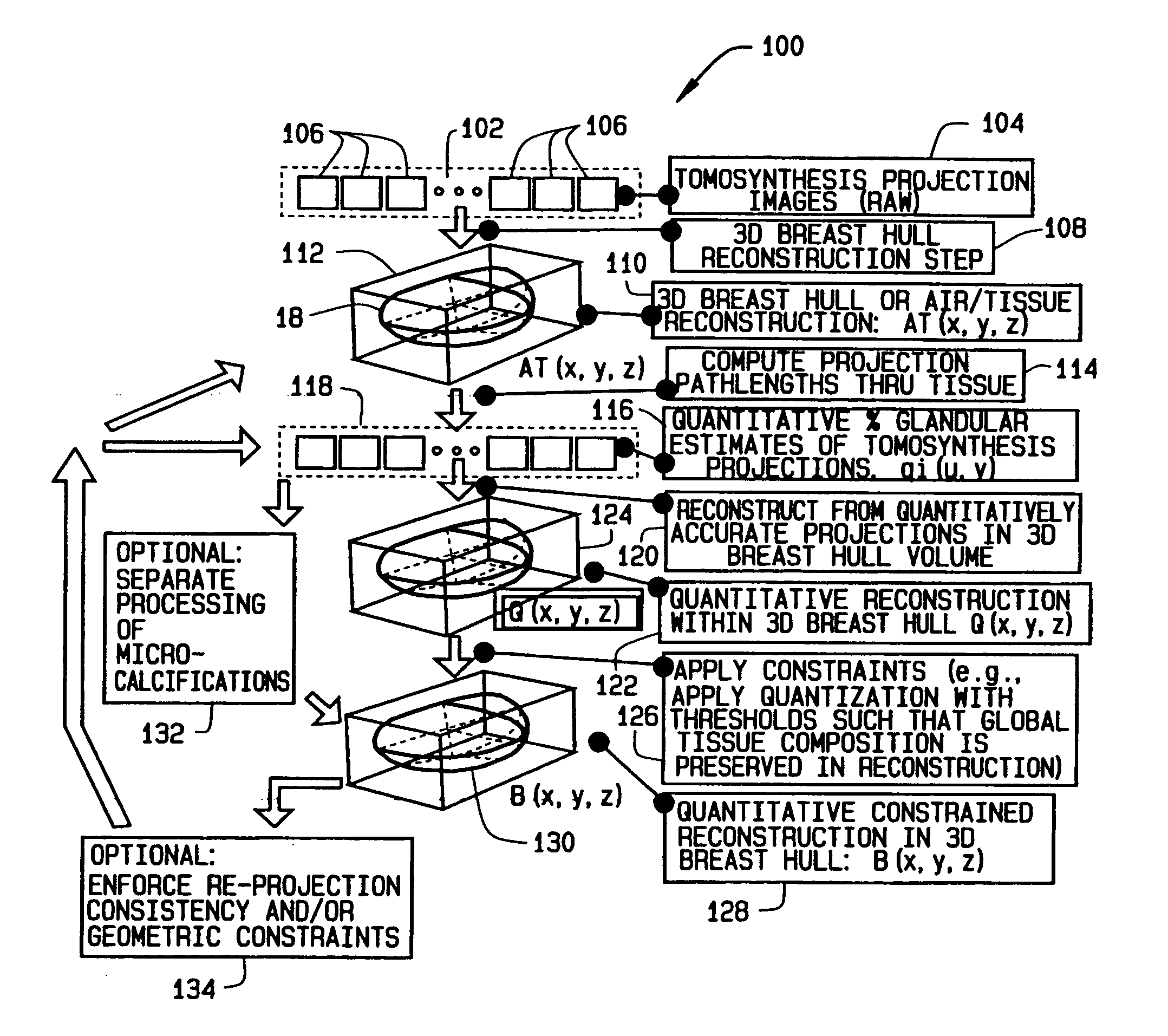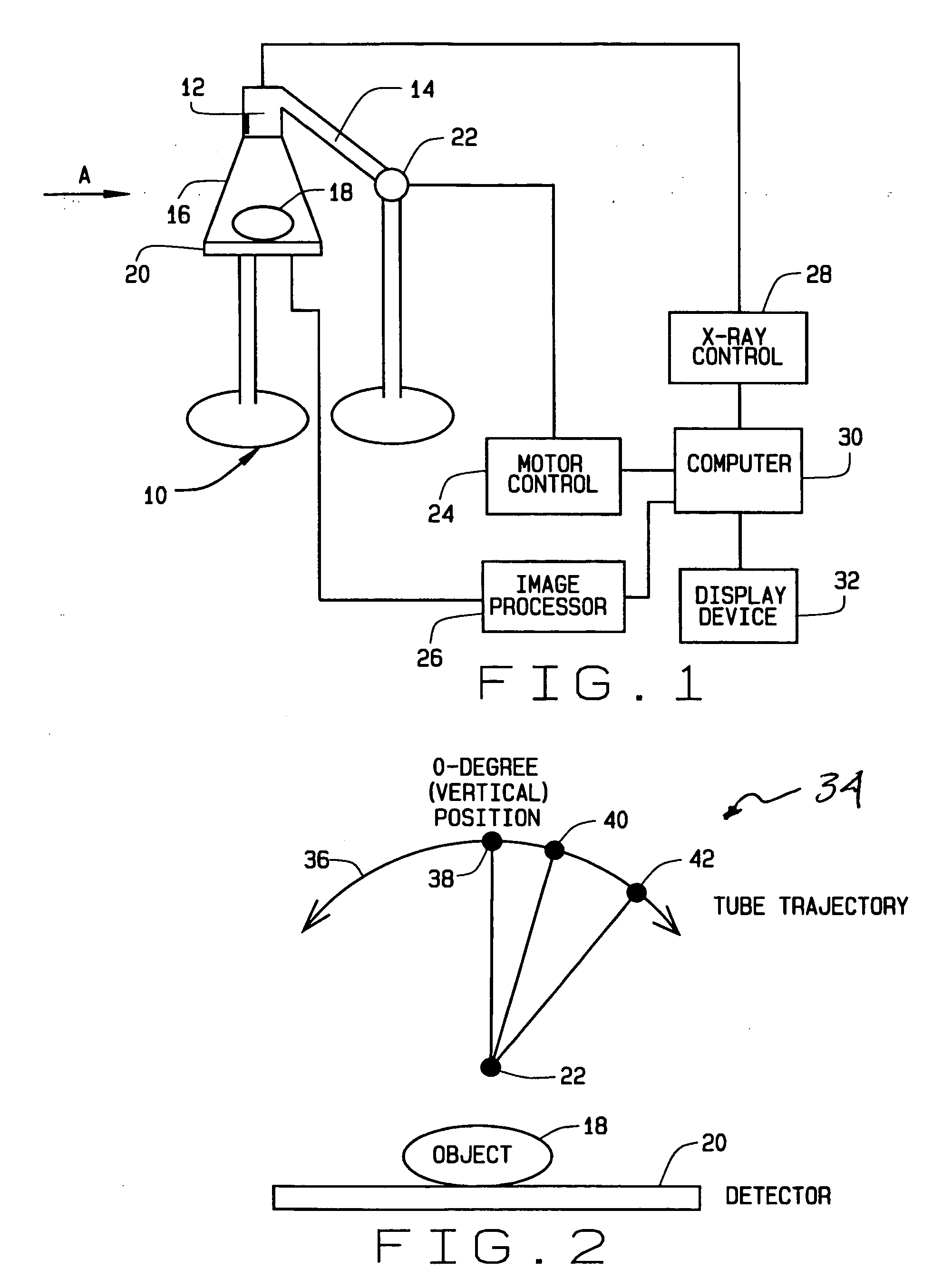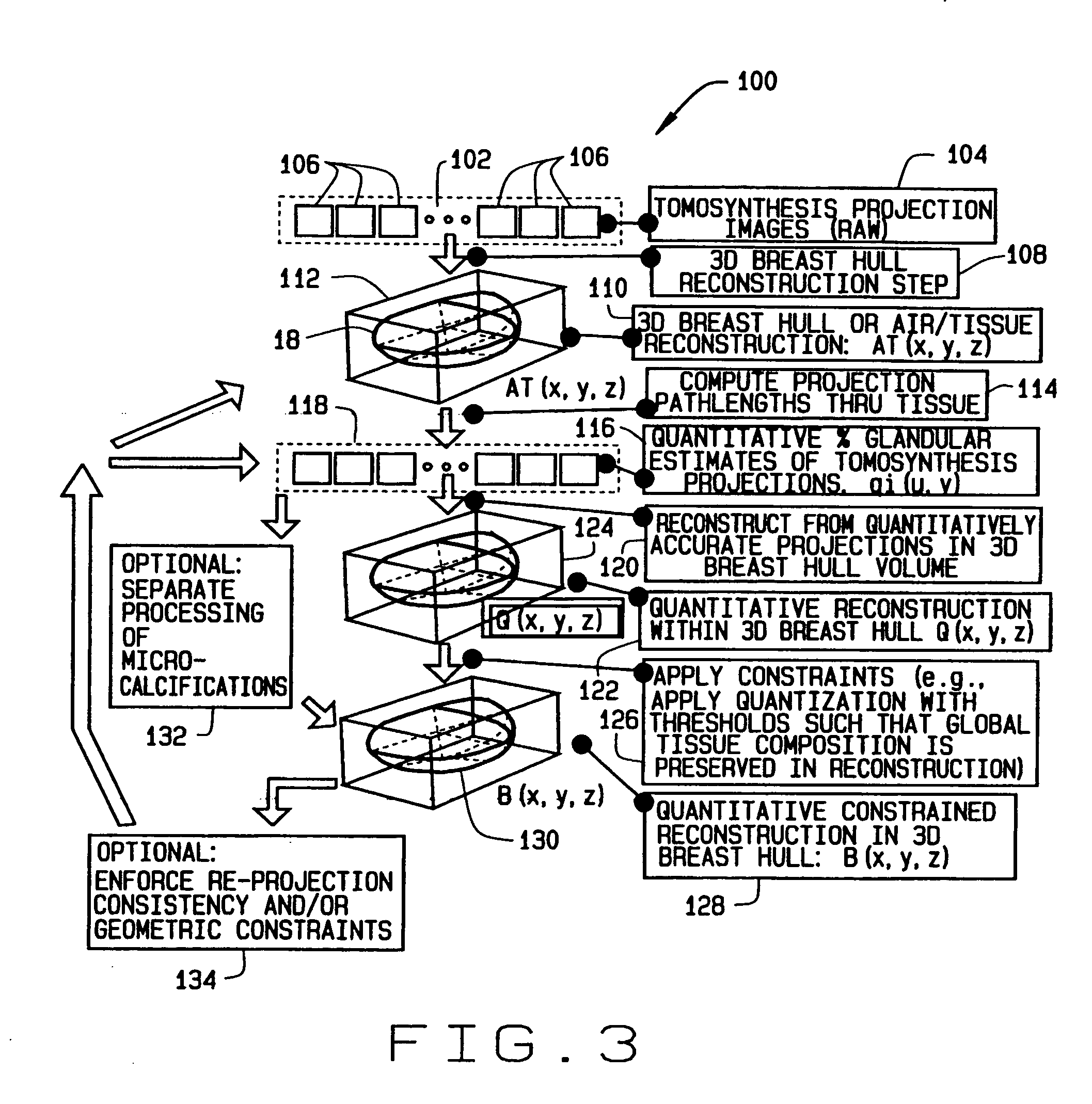Methods and apparatus for reconstruction of volume data from projection data
a technology of projection data and volume data, applied in the direction of material analysis using wave/particle radiation, instruments, nuclear engineering, etc., can solve the problems of limited information available to radiologists for projection image interpretation, and not currently availabl
- Summary
- Abstract
- Description
- Claims
- Application Information
AI Technical Summary
Benefits of technology
Problems solved by technology
Method used
Image
Examples
Embodiment Construction
[0022] Example embodiments of systems that facilitate imaging of objects are described below in detail. Technical effects of the systems and processes described herein include at least one of facilitating the display of a three-dimensional image of an object and automating display of information therein in the form of three-dimensional composition information. Although displaying a 3D volume is one technical effect, the 3D volume can also be fed directly into a computer aided diagnosis (CAD) algorithm, or further processed, irrespective of whether a three-dimensional image is displayed. Technical effects are required to be discussed per the GE manual. Of course, this paragraph can be placed anywhere in the application itself.
[0023] The term “material classes” refers to the different classes of materials that are utilized in a reconstruction. Each material class can contain exactly one material or a range of materials, where “range” is associated with a range of attenuation values t...
PUM
 Login to View More
Login to View More Abstract
Description
Claims
Application Information
 Login to View More
Login to View More - R&D
- Intellectual Property
- Life Sciences
- Materials
- Tech Scout
- Unparalleled Data Quality
- Higher Quality Content
- 60% Fewer Hallucinations
Browse by: Latest US Patents, China's latest patents, Technical Efficacy Thesaurus, Application Domain, Technology Topic, Popular Technical Reports.
© 2025 PatSnap. All rights reserved.Legal|Privacy policy|Modern Slavery Act Transparency Statement|Sitemap|About US| Contact US: help@patsnap.com



